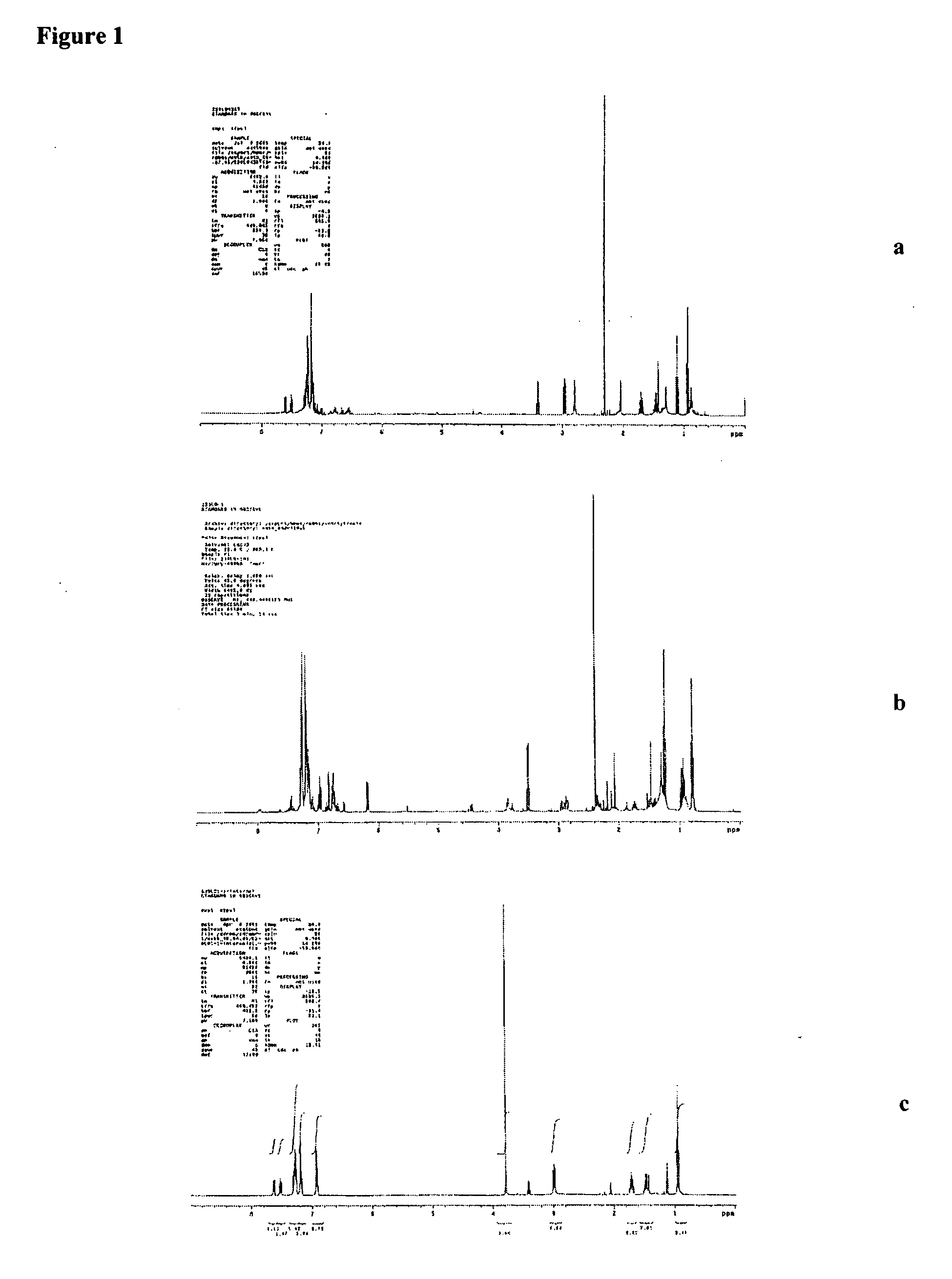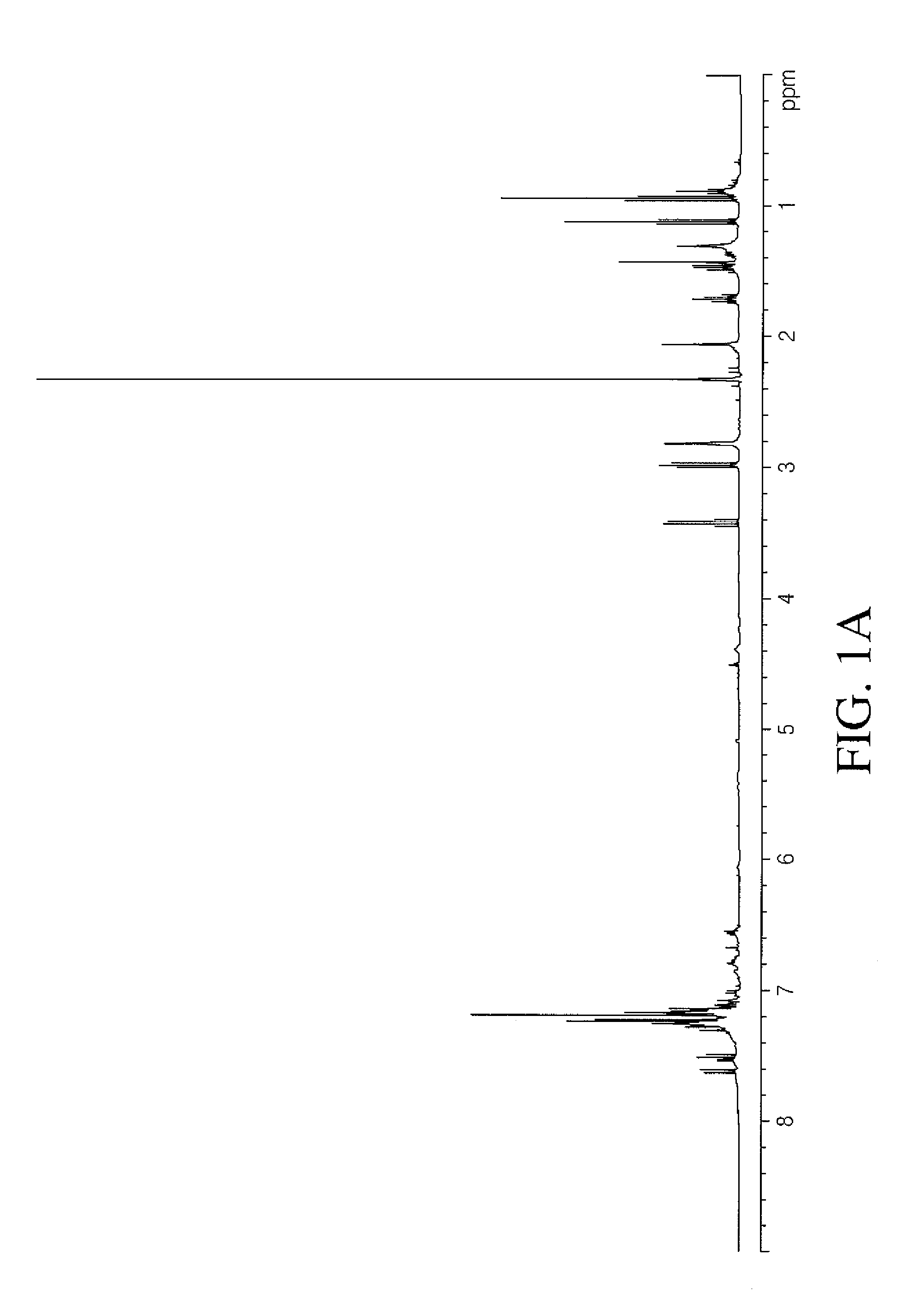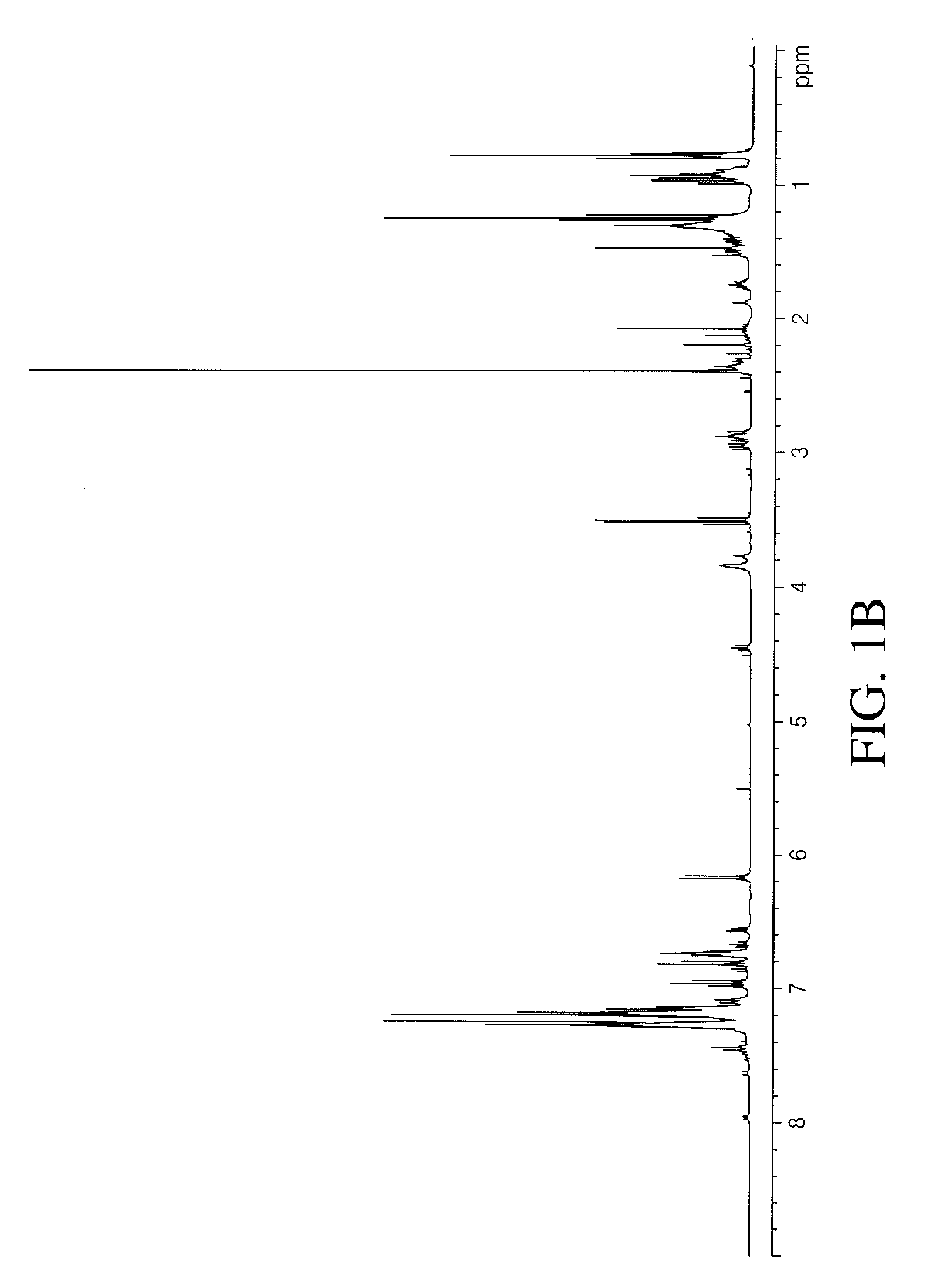Iron catalyzed cross-coupling reactions of imidoyl derivatives
a technology of imidoyl derivatives and iron catalysis, which is applied in the field of cross-coupling reactions of imidoyl halides, sulfonates, phosphates, etc., can solve the problem of cross-coupling between two aryl moieties, and achieve the effect of improving the cross-coupling efficiency and reducing the cross-coupling efficiency
- Summary
- Abstract
- Description
- Claims
- Application Information
AI Technical Summary
Problems solved by technology
Method used
Image
Examples
example 1
Synthesis of 4-methylpiperidine magnesium chloride
[0207] A dried, three-necked flash equipped with argon inlet, a dropping funnel and a thermometer was charged with magnesium turnings (2.52 g, 0.10 mol), which before use had been washed with 0.01 M H2SO4 (aq.) and dried. A small amount of dry THF was added to cover the magnesium. A crystal of iodine was added followed by dibromoethane. When the vigorous reaction had subsided, a solution of distilled 4-chloro-1-methylpiperidine (9.20 g, 0.07 mol) in THF (70 mL) was added dropwise. When the addition was complete, the reaction mixture was heated to refluxing with stirring for 1 h. The reaction mixture was
then allowed to cool to room temperature. Full conversion was confirmed by hydrolysis (GC) and generation of Grignard reagent by iodolysis (GC).
example 2
Synthesis of 4-methyl benzoate magnesium chloride
[0208] A dry 10 mL Schlenk flask was charged under argon with methyl 4-iodobenzoat (84 mg, 0.32 mmol, 1 eq.). Dry THF (0.32 mL) was added, and the solution was cooled to −25° C., then isopropylmagnesium chloride (0.17 mL, 2.0 M in THF, 1.05 eq.) was added slowly over a 5 min. periode, maintaining the temperature below −20° C. On completion of the addition, the reaction mixture was stirred at −20° C. for 0.5 hour. Full conversion was confirmed by hydrolysis (GC) and generation of Grignard reagent by iodolysis (GC).
example 3
Synthesis of 4-benzonitrile magnesium chloride
[0209] A dry 10 mL Schlenk flask was charged under argon with 4-iodobenzonitrile (343.8 mg, 1.50 mmol, 1 eq.). Dry THF (1.50 mL) was added, and the solution was cooled to −25° C., then isopropylmagnesium chloride (0.88 mL, 2.0 M in THF, 1.05 eq.) was added slowly over a 5 min. periode, maintaining the temperature below −20° C. On completion of the addition, the reaction mixture was stirred at −20° C. for 0.5 hour. Full conversion was confirmed by hydrolysis (GC) and generation of Grignard reagent by iodolysis (GC).
PUM
 Login to View More
Login to View More Abstract
Description
Claims
Application Information
 Login to View More
Login to View More - R&D
- Intellectual Property
- Life Sciences
- Materials
- Tech Scout
- Unparalleled Data Quality
- Higher Quality Content
- 60% Fewer Hallucinations
Browse by: Latest US Patents, China's latest patents, Technical Efficacy Thesaurus, Application Domain, Technology Topic, Popular Technical Reports.
© 2025 PatSnap. All rights reserved.Legal|Privacy policy|Modern Slavery Act Transparency Statement|Sitemap|About US| Contact US: help@patsnap.com



